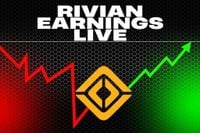Rivian Automotive Inc. (NASDAQ: RIVN) reported its first-quarter financial results on May 6, 2025, revealing better-than-expected performance and a second consecutive quarter of gross profit. The electric vehicle (EV) manufacturer achieved a gross profit of $206 million, marking its highest gross profit to date. CEO RJ Scaringe expressed optimism, stating, "This quarter we hit our second consecutive gross profit and our highest gross profit to date at $206 million." The company also announced that this milestone has unlocked an additional $1 billion investment from Volkswagen Group, expected to be funded on June 30, 2025, as part of their joint venture.
Despite the positive news, Rivian faced challenges as it adjusted its 2025 delivery outlook downwards to between 40,000 and 46,000 units, a reduction from the previous estimate of 46,000 to 51,000. This revision comes in response to evolving trade regulations, including tariffs imposed by former President Trump, which the company indicated would raise its capital expenditures. Rivian has raised its capital expenditure guidance to $1.8 billion to $1.9 billion, up from a prior estimate of $1.6 billion to $1.8 billion. The company maintained its adjusted EBITDA loss projection for 2025, estimating a loss between $1.7 billion and $1.9 billion.
Rivian's total revenue for the quarter was reported at $1.240 billion, exceeding the $981.21 million estimated by Bloomberg and higher than the $1.204 billion reported in the same quarter last year. The company’s adjusted earnings per share (EPS) loss was $0.41, better than the estimated loss of $0.79, while the adjusted EBITDA loss was $329 million, significantly lower than the expected $546.4 million.
In terms of production, Rivian manufactured 14,611 vehicles and delivered 8,640 during the first quarter, aligning with management’s expectations. The company has also made significant progress on its R2 platform, which is slated for a commercial debut in 2026. Scaringe noted, "We have continued to make significant progress on R2, including vehicle validation builds underway and our Normal, Illinois manufacturing facility expansion on track." The expansion of the manufacturing facility is a critical part of Rivian's strategy to increase production capacity.
Rivian's stock saw a slight decline in after-hours trading following the announcement, reflecting investor concerns over the impact of tariffs on the company's operations. The stock has faced significant pressure, trading over 70% lower year-over-year, as investors scrutinize the company's demand durability and production execution.
During the first quarter, Rivian also conducted over 36,000 demo drives, the highest number to date, showcasing its vehicles’ capabilities. The company participated in events like the SXSW festival in Austin, where it carried out more than 7,000 “electric joyrides.” Additionally, Rivian announced a partnership with HelloFresh, incorporating 70 Rivian Commercial Vans into its fleet, marking its first major fleet customer since expanding van sales.
Looking ahead, Rivian aims to streamline its capital expenditures and focus on higher-margin variants of its R1T pickup and R1S SUV. CFO Claire McDonough reiterated the company’s commitment to realigning production with real-time demand and extending its cash runway. Investors are particularly interested in updates related to the R2 platform and construction progress at Rivian’s Georgia facility.
The company’s financial resilience is under scrutiny as it navigates the challenges of the EV market, characterized by high capital intensity and competitive pressures. Rivian's management remains optimistic about achieving modest positive gross profit for the full year 2025, despite the headwinds posed by the global trade environment.
In summary, while Rivian has made notable strides in its financial performance and product development, the company must address the implications of tariffs and evolving market conditions as it seeks to stabilize and grow in the competitive EV landscape.

